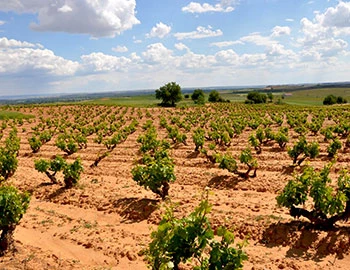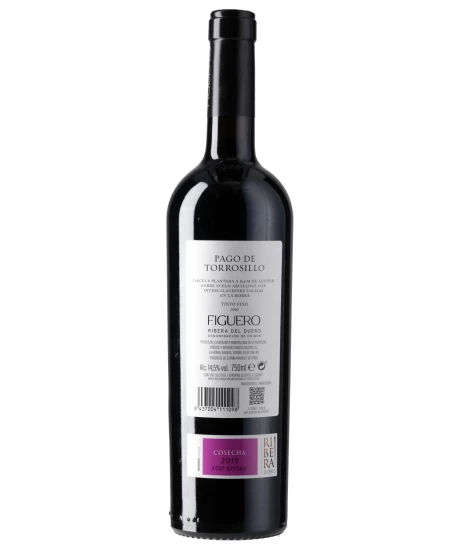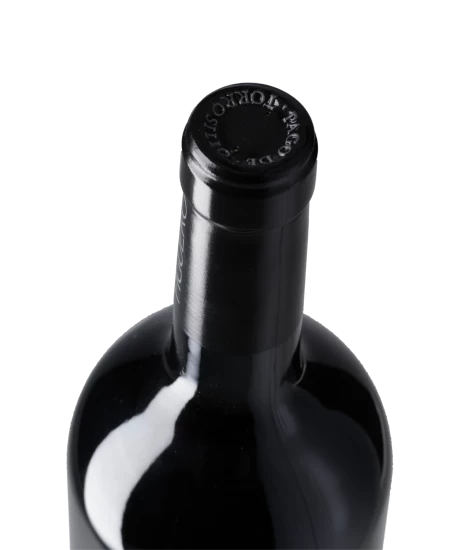Pago de Torrosillo (Ex Noble) Figuero 2019
Pago de Torrosillo (Ex Noble) Figuero 2019
DO Ribera del Duero, Figuero, 750 ml

A wine to remember
- Pago de Torrosillo – the new name highlights a single vineyard of character: powerful, deep, and distinctive.
- Opulent, complex, and marked by firm tannins. Ripe dried fruit aromas meet juicy acidity – powerful, yet with an elegant flow on the palate.
- A noble companion to hearty dishes – or a stylish drop for a relaxed end to the day.
Description
The new name refers to the exclusive single vineyard Pago de Torrosillo in Ribera del Duero, where this Tempranillo originates – a terroir that stands for power, depth and character. The powerful counterpart to the elegant, feminine Milagros: opulent and complex, with impressive tannin grip. Dense and multi-layered on the palate, carried by aromas of figs, dates, raisins and ripe plums. The juicy acidity gives it structure and surprising drinkability – despite its fullness. A characterful meditation wine with a noble charisma. Perfect with hearty dishes or as a stylish accompaniment to a fine cigar.
Attributes
| Grape variety: | Tempranillo |
| Producer: | Figuero |
| Origin: | Spain / Castilla y León / Ribera del Duero |
| Ripening potential: | 5 to 15 years |
| Drinking temperature: | 16 to 18 °C |
| Food Pairing: | Wild boar entrecôte with Spätzli, Châteaubriand, Filet Wellington, Bistecca fiorentina, T-Bone steak, Latin American dishes |
| Vinification: | fully destemmed, cooling period, fermentation in steel tank, Pumping over, protein fining |
| Harvest: | hand-picking, strict selection |
| Maturation: | in new barriques |
| Bottling: | filtration |
| Maturation duration: | 21 months |
| Volume: | 14.5 % |
| Note: | Contains sulphites |
Ribera del Duero
Ribera del Duero: Spanish temperament in a glass
The Tempranillo grape yields a particularly powerful wine with ripe berry fruit and alluring spice in the Ribera del Duero region, where it is called Tinta del País. It is no wonder that the region is seen internationally as a flagship for Spanish red wines. The designation of origin was first introduced in 1982. At the time, only few wineries existed; today, there are over 270. Many premium wines come from exceptionally old vines, sometimes over 80 years old.

Castilla y León
Castile and León: Increasing diversity
Only 30 years ago, the autonomous region of Castile and León was an almost blank spot on the European wine list. This has changed immensely thanks to three grape varieties. The Tempranillo variety yields feisty, strong wines in Ribera del Duero and Toro. And Bierzo, the small wine area in the region's northwest, has experienced an impressive ascent, thanks to the character-laden Mencia variety. Finally, the fresh and fruity Verdelho pressings from Rueda have become the most successful Spanish white wines.

Spain
Spain – Variety and perfection
“Somewhere in la Mancha, in a place whose name I do not care to remember...,” begins Don Quixote's odyssey.
The most famous part is definitely when Don Quixote thinks windmills are his enemy and wants to fight them – until they nearly kill him. It’s possible there was a bit too much of the La Mancha wine at play. Spanish vines fight for their survival in rugged landscapes, battling fierce drought and rough soils. But they fight well.





